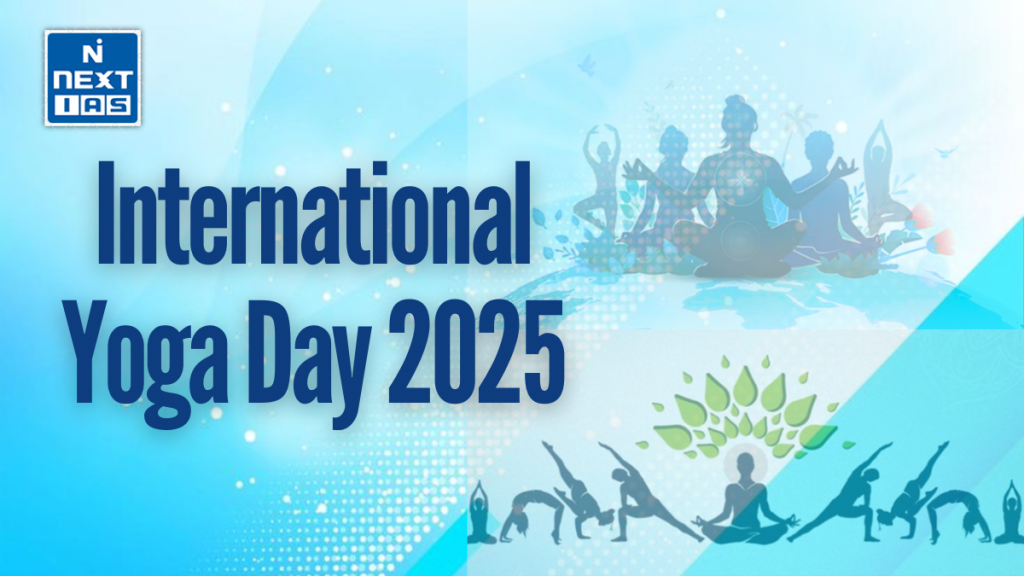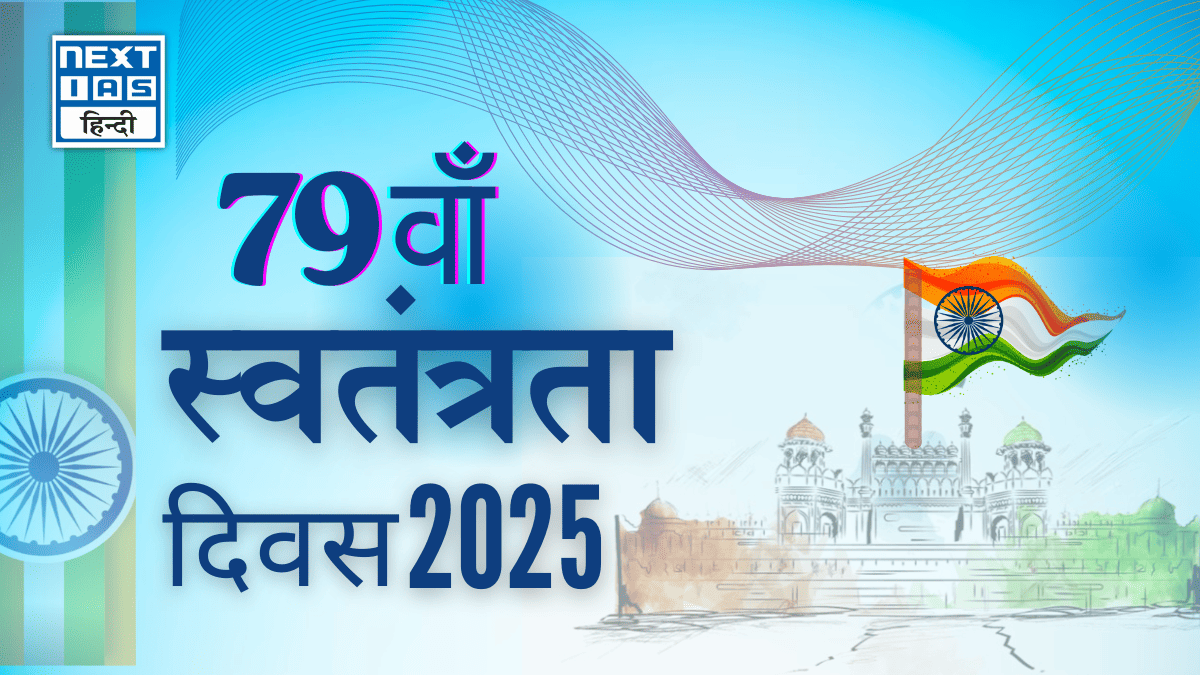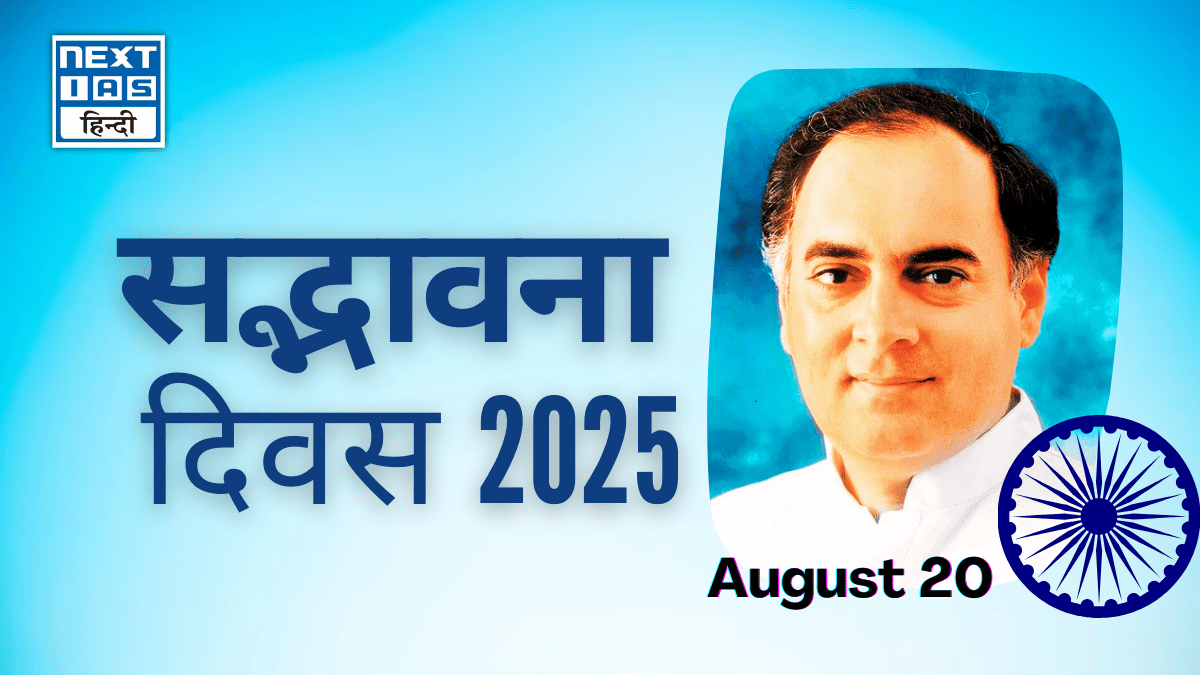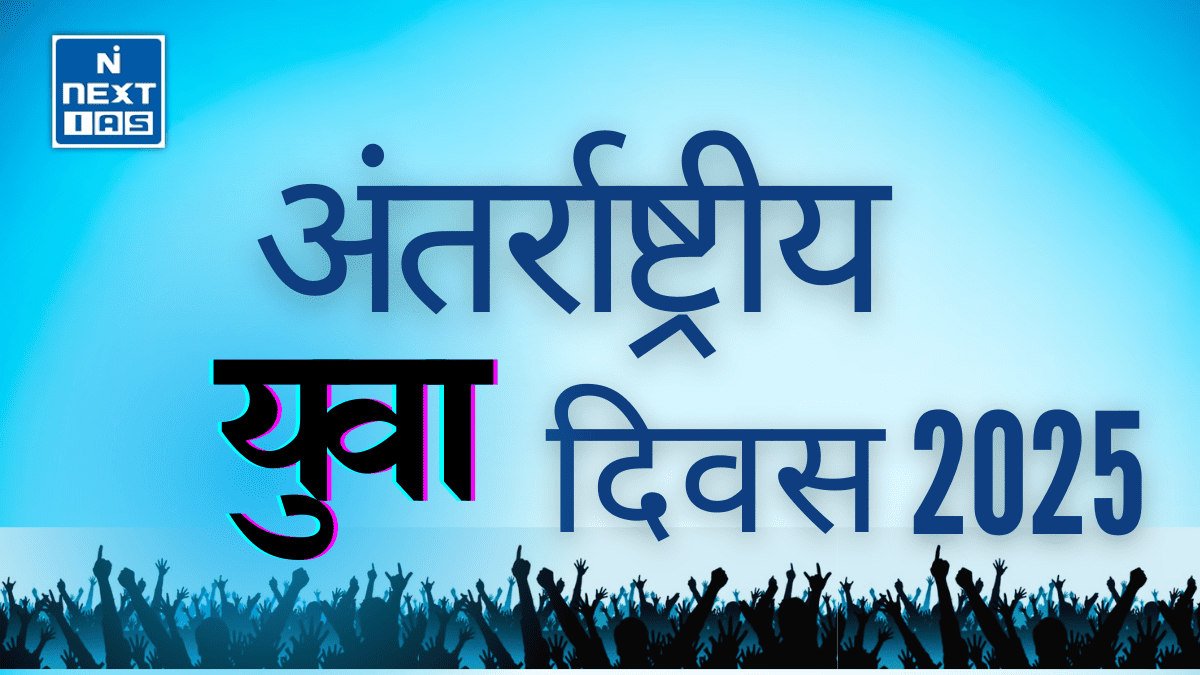
International Yoga Day [21 June], also known as International Day of Yoga (IDY) or World Yoga Day, is the day when the world comes together to celebrate the ancient wellness practice of Yoga. With the theme of “Yoga for One Earth, One Health”, the world is all set to celebrate International Yoga Day 2025 or the International Day of Yoga (IDY 2025) on 21 June 2025. As the world promotes health and well-being on this special day, this article presents a detailed account of International Day of Yoga, including its history, key facts, aims & objectives, theme, celebrations & activities, significance, and more.
About International Yoga Day
International Day of Yoga (IDY) or World Yoga Day is a global observance celebrated annually on the 21st June to raise awareness about the practice of Yoga and its benefits. The day serves as a platform to promote physical, mental, and spiritual well-being through the practice of Yoga.
| Note: International Day of Yoga, 21st June, coincides with the Summar Solstice in the Northern Hemisphere – the day with the longest period of daylight and the shortest night of the year in the Northern Hemisphere. |
Key Facts About International Yoga Day 2025
| Date | 21st June |
| Origin | Originated in 2014 when the United Nations General Assembly (UNGA) adopted a unanimous resolution declaring June 21 as the International Day of Yoga (IDY). |
| First Celebration | The first International Day of Yoga was celebrated worldwide on June 21, 2015. |
| Objective | To increase public awareness of the various advantages of Yoga practice. |
| Theme | The theme of International Day of Yoga varies each year, highlighting a specific aspect of Yoga and its benefits.(Theme of International Yoga Day 2025: “Yoga for One Earth, One Health”) |
| Logo | The International Day of Yoga Logo consists of several elements that convey various aspects of yoga as a holistic practice. |
What is Yoga?
- Yoga is a holistic practice that involves Physical Postures (Asanas), Breathing Exercises (Pranayama), Meditation (Dhyana), and Ethical Principles (Yama and Niyama) to promote physical, mental, and spiritual well-being.
- The word “Yoga” comes from the Sanskrit word “Yuj,” which means “to yoke” or “to unite,” symbolizing the cultivation of a sense of harmony between the mind, body, and spirit.
- The practice of Yoga is said to have originated in ancient India, with roots stretching back over 5,000 years.
History of International Yoga Day
The International Day of Yoga history dates back to the year 2014. The chronology of the origin and evolution of the day is explained below.
- September 2014: The Prime Minister of India Shri Narendra Modi proposed the idea of the International Day of Yoga at the United Nations General Assembly (UNGA).
- December 2014: On 11 December 2014, the United Nations General Assembly adopted a unanimous resolution declaring June 21 as the International Day of Yoga.
- June 2015: Following the UNGA resolution, the first International Yoga Day was observed worldwide on 21 June 2015.
- At Present: At present, International Day of Yoga has become a global movement, with participation from across the globe, making it one of the largest annual celebrations in the world.
- International Yoga Day 2025 is expected to be such a mega event.
Reasons for Choosing 21 June as IDY
June 21 was chosen as the Day because of the following two main reasons:
- 21st June is Summar Solstice or the longest day of the year in the Northern Hemisphere.
- This symbolizes that the practice of yoga brings light and vitality.
- 21st June is also a day that has special significance in many cultures around the world.
Aims & Objectives of International Yoga Day
Some of the major aims and objectives of the International Day of Yoga (IDY) can be seen as follows:
- To raise global awareness about the benefits of practicing yoga.
- To promote the adoption of lifestyle patterns and choices that lead to good health.
- To reduce physical inactivity, which is a leading cause of death worldwide and a major risk factor for non-communicable diseases like cardiovascular ailments, cancer, and diabetes.
Logo of International Yoga Day
The International Day of Yoga Logo consists of several elements that come together to convey the essence of yoga as a holistic practice that promotes physical, mental, and spiritual well-being, and emphasizes harmony with nature and the environment.

Various elements of the logo and their significance can be seen as follows:
- Human Figure: A human figure at the center, depicted in a yoga posture, symbolizes the yoga practice itself.
- Orange Halo: The orange halo around the head of the human figure represents enlightenment, spiritual awakening, or the inner light that yoga helps cultivate.
- Globe: The depiction of the globe in the World Yoga Day Logo signifies the universality of yoga, meaning it’s a practice accessible to people from all over the world.
- Leaves (Brown and Green): The two pairs of leaves, one brown and one green, represent the connection between yoga and nature.
- Brown Leaves: The brown leaves in the logo symbolize the Earth element.
- Green Leaves: The green leaves in the logo represent nature and new growth.
- Text “Yoga for Harmony and Peace“: This inscription emphasizes the core benefits of yoga – achieving harmony within oneself and promoting peace in the world.
Overall, the logo communicates the message that yoga is a practice that fosters inner peace, connects us with nature, and is a practice for everyone, regardless of location.
Global Celebrations of International Yoga Day 2025
The celebrations at the global level involve a range of official and public activities and events. Some common types of International Day of Yoga events include:
- International Organizations like the United Nations and the World Health Organization host events emphasizing the global significance of yoga.
- Embassies and Consulates across the world organize yoga events to promote cultural exchange and global unity.
- Digital campaigns are led to spread awareness about the benefits of yoga and encourage participation.
- Online seminars and webinars are conducted by yoga experts and practitioners focusing on different aspects of yoga.
- Events like mass yoga sessions, yoga workshops, and seminars are organized by the communities and at iconic public spots across the world.
- 10 targeted events like Yoga Sangam, Yoga Bandhan, Harit Yoga, Yoga Samavesh, and Yoga Unplugged for amplifying the narrative of yoga.
- CYP at Scale: 1 lakh+ locations across India will host synchronized Common Yoga Protocol sessions led by PM Narendra Modi from Visakhapatnam on June 21, 2025.
- Corporates offer special yoga sessions at workplaces for employees to promote workplace wellness.
- Schools and universities organize yoga sessions and competitions for students to promote physical fitness and mental health.
All these types of events are expected to be held during the International Yoga Day 2025 celebrations.
International Yoga Day 2025 in India
In India as well, the International Yoga Day 2025 celebrations & activities are marked by a wide range of official and public activities and events as described below.
Official IDY Events in India
- At the central level, the Ministry of AYUSH, Government of India organizes various official International Day of Yoga events across the country.
- Yoga sessions are organized for employees in government offices by the State Government, Local Government, and PSUs.
- Workshops and seminars are held, promoting the message of holistic health and well-being.
- Special programs on yoga are broadcast on TV and radio, featuring interviews with yoga experts and live yoga sessions.
- Displays and exhibitions on yoga literature, equipment, and accessories.
Public IDY Events in India
- Yoga gurus and celebrities lead large gatherings in public spaces, where thousands of participants come together to practice yoga.
- Yoga events in schools, parks, etc are a common sight during International Day of Yoga celebrations.
- Social media challenges, encouraging people to share their yoga practices and inspire others.
- Events featuring traditional music, dance, and cultural performances that celebrate India’s heritage of yoga.
All these types of activities and events are expected to be held as part of celebrations of International Yoga Day 2025 in India.
Theme of International Yoga Day 2025
The official theme of International Yoga Day 2025 has been declared as “Yoga for One Earth, One Health”. The multifarious significance of the theme can be seen as explained below:
- Healthier Society: A society that embraces yoga tends to be healthier. Reduced stress levels and improved physical health among individuals can lead to decreased healthcare costs and a more productive workforce.
- Community Building: Yoga brings people together, fostering a sense of community and shared purpose. Group yoga sessions, workshops, and retreats provide opportunities for social interaction and mutual support.
- Cultural Integration: As yoga gains popularity worldwide, it serves as a bridge between different cultures, promoting understanding and respect. This cultural exchange enriches societies and fosters global harmony.
- Promoting Peace: Yoga’s emphasis on non-violence (ahimsa) and compassion can lead to more peaceful communities. Practitioners of yoga often develop a greater sense of empathy and kindness, contributing to social harmony.
- Empowerment: Yoga empowers individuals by improving their self-esteem and confidence. This can be particularly transformative for marginalized communities, providing them with tools to cope with challenges and improve their lives.
- Environmental Consciousness: Yoga promotes a connection with nature and a sense of responsibility towards the environment. This awareness can lead to more sustainable living practices and greater environmental stewardship.
Importance of International Day of Yoga
International Day of Yoga is much more than just a celebration of the ancient practice of Yoga. It carries multifarious significance as can be seen as follows:
- By promoting awareness and practice of yoga, it promotes physical and mental well-being across the world. This, in turn, has the effect of promoting healthier lifestyles and preventive healthcare practices.
- Yoga teaches us to focus on the present moment and to let go of stress and negativity. This, in turn, helps us find peace and harmony in our lives.
- The Day and the practice of Yoga have also been used to promote peace and harmony in conflict zones.
- Yoga is also a means to discover a sense of unity with the world and with nature at large. This, in turn, helps promote the ideals of peace and tranquility in the world.
- By bringing people from across the world, transcending boundaries of nationality, religion, and culture, the day helps to foster global unity.
- Yoga’s holistic approach emphasizes the well-being of individuals and the planet. This aligns with the principles of Sustainable Development.
- Yoga’s principles of non-violence, compassion, and respect for all living beings align with the broader goals of global peace and tranquility.
Conclusion
In summary, more than just a celebration of a physical practice, International Yoga Day or International Day of Yoga (IDY) or World Yoga Day is a tribute to a timeless tradition that continues to inspire and benefit mankind. As we celebrate the day this year, let’s embrace the message – “Yoga nurtures the mind, body, and soul.”
Wish you all a happy International Yoga Day 2025!
Team NEXT IAS.
Initiatives Taken by India to Promote IDY and Yoga
- The Ministry of AYUSH has been established to promote traditional Indian systems of medicine and Yoga.
- The ministry plays a central role in organizing and promoting the International Day of Yoga (IDY).
- Indian embassies and consulates around the world organize yoga events and activities, promoting the significance of the International Day of Yoga in their host countries.
- The Center has developed the Common Yoga Protocol (CYP) as a standardized set of yoga postures suitable for all ages and abilities.
- This protocol makes yoga accessible to a wider audience and facilitates mass yoga sessions around the world.
- The Government has also taken several digital initiatives towards promotion of Yoga, such as:
- M-Yoga App has been launched in collaboration with the WHO to provide videos of Yoga training and practice in multiple languages.
- A New Website for the International Day of Yoga (IDY) has been launched to provide all the updates and relevant information relating to IDY events.
- The Ministry of Youth Affairs and Sports has recognized Yoga as a sports discipline and placed it in the ‘Priority’ category.
- Beauty & Wellness Sector Skill Council has been established as a non-profit organization under the National Skill Development Corporation (NSDC) to promote vocational education courses in Yoga for CBSE schools.
- Yoga is also being promoted as part of the Fit India Movement.
- To strengthen yoga’s roots within India, initiatives like establishing Swami Vivekananda District Yoga Health Centres and AYUSH Health & Wellness Centres promote yoga practice at the grassroots level, particularly in rural areas.
National Countdown Campaigns
Some of the initiatives being undertaken by the Ministry of AYUSH to maximize participation in the observance of IDY 2025 are:
- 100 Day Countdown Event: Morarji Desai National Institute of Yoga (MDNIY) and Ministry of AYUSH organised Yoga Mahotsav 2025 – a curtain raiser to IDY 2025 on March 13, 2025, in New Delhi. This event formally marked the beginning of the journey towards the 11th edition of IDY.
- 75-Day Countdown Event: The 75th day countdown event took place on April 7, 2025, in Bhubaneswar. It saw enthusiastic participation from over 6,000 individuals. The event also marked the launch of the Harit Yoga initiative, with the distribution of over 5,000 medicinal plants.
- 50-Day Countdown Event: The 50th day countdown event took place in Maharashtra on May 2, 2025. It witnessed participation from more than 6,200 people. The event featured a mass Common Yoga Protocol (CYP) demonstration from 6:30 AM to 8:00 AM, in the presence of several dignitaries and yoga enthusiasts. The registration portal for Yoga Sangam was also launched during the event.
- 25-Day Countdown Event: The 25th day countdown event took place on May 27, 2025, in Pondicherry. Over 4,000 individuals attended it.
Ocean Ring of Yoga by Indian Navy
- The Ocean Ring of Yoga is an initiative by the Indian Navy to celebrate International Yoga Day on June 21st every year.
- It involves Indian naval ships deployed in the Indian Ocean region visiting various ports of friendly foreign countries and conducting yoga sessions and events.
- The Indian Navy is expected to send a large fleet of naval ships as part of International Yoga Day 2024 celebrations.
- The first Ocean Ring of Yoga was held in 2015, and it has become an annual tradition since then.
- This initiative is a way to promote the message of yoga and its benefits to people around the world, as well as to strengthen bonds and foster harmony among nations.

Yoga Mahotsav
- Yoga Mahotsav is a large-scale event held in India in the lead-up to the International Day of Yoga (IDY) on June 21st every year.
- It is organized by the Ministry of AYUSH, Government of India.
- Its purpose is to build momentum for the upcoming International Yoga Day and create widespread enthusiasm for yoga.
- Events under Yoga Mahotsav are based on the theme for the year.
- Usual activities under Yoga Mahotsav include mass yoga sessions where participants perform the Common Yoga Protocol (CYP) together, workshops, talks by yoga experts, and cultural performances.
Source: PIB
FAQs on International Yoga Day
When is International Yoga Day celebrated?
International Day of Yoga is celebrated on 21st June every year worldwide.
What is the theme of the International Yoga Day in 2025?
The theme of International Yoga Day 2025 (IDY 2025) is Yoga for One Earth, One Health.






